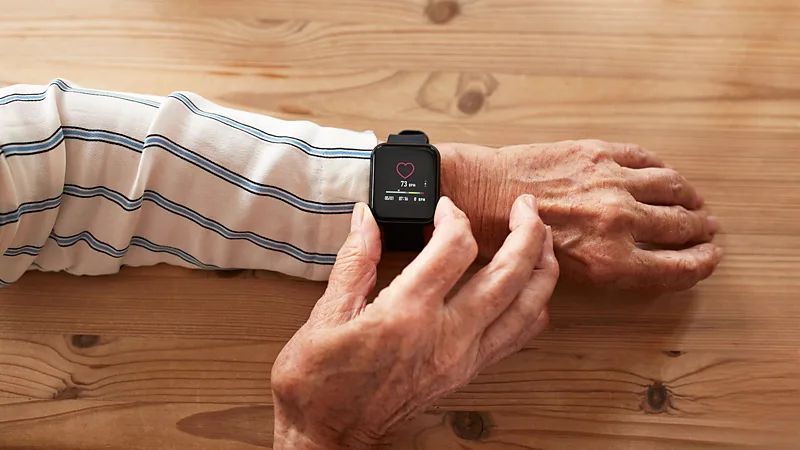
What Science Says About Keeping Cool in a Heatwave
Soaring temperatures make daily life uncomfortable and pose a serious threat to human health and the environment. Here is our guide to getting through one.
The oppressive temperatures of a heatwave can have far-reaching impacts, from risks to human health to destroying crops and increasing the risk of wildfires. In 2019, extreme heat is estimated to have caused the deaths of 356,000 people worldwide, according to one set of estimates, making it one of the most dangerous yet overlooked natural hazards. While there is still a great deal of uncertainty about the toll that heatwaves take (the World Health Organization estimates 166,000 people died between 1998 and 2017, by comparison), there is little doubt that the number of people exposed to heatwaves around the world is increasing.
Climate change is only likely to make heat waves more frequent and intense in the future. According to one analysis, the “heat dome” that caused a record heatwave in the summer of 2023 in the southern US, including Texas and Louisiana, has been made five times more likely due to human-induced climate change. Temperatures reached more than 119°F (48°C); by mid-July 2023, some 110 million Americans were under heat warnings. The energy grid in Texas struggled under the strain of surging air conditioning use. A similar picture has been unfolding in 2024, with heat domes bringing dangerous temperatures to Mexico and many parts of the US. According to the World Weather Attribution group, the heatwaves that hit California, Nevada, Arizona, and Mexico in May and early June 2024 were made 35 times more likely due to climate change.
In the US, an estimated 1,600 people die each year due to extreme heat, which can also place considerable strain on health services.
Tips for Surviving a Heatwave:
- Stay Hydrated: Drink plenty of water, even if you don’t feel thirsty. Avoid sugary, caffeinated, or alcoholic beverages which can dehydrate you.
- Stay Indoors: Remain in air-conditioned buildings as much as possible. If you don’t have air conditioning at home, visit public places like shopping malls, libraries, or community centres.
- Limit Outdoor Activities: Avoid strenuous activities during the hottest parts of the day. If you need to be outside, take frequent breaks in the shade and wear lightweight, light-coloured clothing.
- Cool Down: Take cool showers or baths, use a damp cloth on your neck, and keep a fan running.
- Check on Others: Look out for those who are more vulnerable to heat, such as the elderly, young children, and pets. Ensure they have access to a cool environment and are staying hydrated.
- Know the Signs of Heat-Related Illness: Be aware of the symptoms of heat exhaustion and heat stroke. Heat exhaustion includes heavy sweating, weakness, and dizziness. Heat stroke, a more serious condition, includes symptoms like a high body temperature, confusion, and unconsciousness. Seek medical attention immediately if you or someone else is experiencing these symptoms.
How do you stay cool in a heatwave?

Staying cool during a heatwave is essential for maintaining comfort and health. To beat the heat, avoid going outside between 11 am and 3 pm when the sun is at its strongest. If you need to be outside, seek shade whenever possible. Keep windows and curtains closed during the hottest parts of the day to block out the sun’s heat. Open windows in the evening when the air is cooler to let in fresh air. Fans can help up to a point, but if temperatures exceed 35°C (95°F), they may circulate hot air and increase dehydration. If using a fan, place a bowl of ice or a cool wet sheet in front of it to enhance its cooling effect. Use air conditioning if available. If not, spend time in air-conditioned public spaces like shopping malls or libraries. Take cool showers or baths. Use damp cloths on your neck and wrists. Ancient methods like placing earthenware jars of water or wet sheets in front of open windows can help cool the air as it passes over them.
Drink plenty of water throughout the day. Both hot and cold drinks can help, but avoid excessive alcohol consumption as it can dehydrate you. Consume foods with high water content, such as strawberries, cucumber, lettuce, and watermelon. Spicy foods may also help by increasing sweating and cooling the body.
Wear loose-fitting clothes that allow air to circulate next to your skin. The colour of clothing is less important than its fit and fabric. Opt for fabrics like cotton and polyester, which reflect infrared radiation. However, be mindful that cotton absorbs moisture but doesn’t dry quickly, which can be uncomfortable. Consider newer, moisture-wicking fabrics for better comfort.
If you live near water bodies or green spaces, spend time there as they can have a cooling effect on the surrounding area. Look for areas with white-painted pavements or roofs, which reflect sunlight and reduce ambient temperatures.
Consider long-term adaptations like installing green roofs, planting trees, or using wind catchers to enhance cross-ventilation in your home. Support or advocate for urban planning strategies that incorporate green corridors and cooling infrastructure like solar-blocking paint and low-energy air conditioning systems.
By following these tips, you can stay cooler and safer during heatwaves. Remember to check on vulnerable individuals, such as the elderly and young children, to ensure they are also taking steps to stay cool and hydrated.
Sleeping in Heatwave
Temperature plays a crucial role in the human sleep cycle. As bedtime approaches, our core body temperature typically drops, along with our heart rate, making us feel sleepy. The veins in our hands and feet open up to allow more blood through, increasing skin temperature and promoting heat loss. However, on hot, sticky nights, it’s harder for our bodies to lose heat, making it more difficult to fall asleep. High night-time temperatures can also lead to disrupted sleep, leaving us tired the next day.
The ideal room temperature for sleep is between 19-21°C, though some research suggests that our skin needs to be between 31-35°C. Bed sheets, duvets, and pyjamas help create a microclimate around our skin to maintain this optimal temperature. When temperatures rise, our first instinct might be to throw off the bed sheets to cool down. However, research indicates this may not be as helpful as it disrupts the body’s ability to regulate the skin’s temperature. Using a thin sheet can be more beneficial than a thicker one, as it helps maintain a stable microclimate.

Using a fan to increase air circulation over your body at night can help. Overhead or ceiling fans distribute a gentle flow of air, reducing the number of times you wake up during the night. Opening windows can also help if there is a gentle breeze, though noise from outside can be a problem in urban areas. Keeping curtains shut during the day, especially when the sun is shining on the windows, can prevent your bedroom from heating up too much.
Avoiding late-night snacks is also beneficial. Late-night eating has been linked to elevated night-time core body temperatures, which can disturb sleep. By following these tips, you can improve your chances of getting a good night’s sleep during a heatwave.
How Does Hot Weather Affect Our Health?
The human body’s ideal temperature lies between 35.01°C and 37.76°C (95-99.9°F), depending on how it is measured, although most medical experts accept an average of 36.8°C (98.2°F). When the surrounding air nears or exceeds this temperature, particularly when humidity is high, the body’s ability to cool itself weakens. One study from 2020 found the upper limit of what the human body can survive without serious health effects is a wet-bulb temperature of 35°C (95°F) – which is a measure of both temperature and humidity together. In high levels of humidity, it is harder for sweat to evaporate and so cool down.

Heat Exhaustion and Heatstroke
When the body becomes too hot or struggles to regulate its temperature, it can lead to heat exhaustion. It can come on quickly or over a few hours, but symptoms include feeling faint, excessive sweating, clammy skin, cramps, and nausea. This can also lead to heatstroke, which means the body can no longer manage the heat and you should seek medical attention. Symptoms include feeling confused, vomiting or nausea, no sweating, excessively hot skin, and loss of consciousness or seizures.
Other Health Problems Caused by Heatwaves
Heatwaves can also lead to a range of health problems such as headaches dehydration heart attacks and respiratory problems, sometimes leading to death.
While people of all ages are susceptible to the heat, the elderly are particularly at risk during heatwaves as they are less able to regulate their body temperature, and are more vulnerable to heart problems due to heat stress. Those with underlying health conditions are also particularly vulnerable. It is estimated that half of the global population and around one billion workers are exposed to periods of harmful high temperatures.
Impact of Climate Change on Heatwaves

Climate change is causing heatwaves to last longer and become more frequent. Hot weather has also been associated with worse outcomes in pregnancy and birth, higher suicide rates, mental health issues, and increased hospital admissions. Some medications can increase the risk of hot weather. Some drugs for epilepsy and Parkinson’s, for example, have been found to reduce sweating and make it harder to stay cool. Diuretics can also increase the amount of water the body expels as urine, and could also lead to an imbalance of minerals.
Do Heatwaves Make Inequalities Worse?
Climate change doesn’t hit everyone the same way. The effects are disproportionately felt by the poorest and often split down racial lines. Countries in Africa which have contributed only a little to the carbon emissions fueling climate change will feel the effects more forcefully through drought and hotter temperatures.
Hotter temperatures in Africa do not make the news in the same way as those closer to Western homes and African voices are not well represented at climate change summits. Heat can be a slow killer as temperatures rise gradually, often without us noticing until it’s too late. It may not be mentioned on death certificates, leaving medical authorities with a poor grasp of its prevalence.

How Heat Affects Your Brain
If the warm weather has you a little hot under the collar, you are not alone. As the temperature rises, it would seem that it makes us all a bit more irritable, angry, stressed, and less happy. The symptoms range from the relatively mundane – motorists are a little bit more likely to honk their horns when they’re stuck in traffic, and the police usually notice a spike in disorderly behaviour.
But, some of the symptoms are a little more alarming (even if only anecdotal). Research in Australia has found that there tends to be a spike in hospital admissions when the temperature is around 27°C (80°F), and in Greece, a study found that 30% of the nation’s homicides happen above 25°C (77°F). In Mexico, the hot weather is thought to cause tensions to run high, so perhaps it is best for all our sakes that we try to keep our cool in a heatwave.
Why Does Sunburn Hurt?
Hot weather also comes with another risk – sunburn. The after-effects of sunburn can leave you feeling uncomfortable for days. But what is happening? Nociceptors in our skin detect pain. One channel in particular is responsible for extreme heat – TRPV1 – though it isn’t typically activated until temperatures reach 42°C (107.6°F).
Once your skin reaches that threshold, the channel becomes activated, which in turn activates the entire nerve and communicates pain to the brain. When we are sunburnt, our skin becomes inflamed (it’s why you turn pink). This inflammation sensitizes the TRPV1 channel, meaning we constantly feel uncomfortable and even something like a lukewarm shower can feel excruciatingly hot.
How to Stay Hydrated in the Heat

Keeping hydrated is a consistent public health message – for decades we’ve been urged by health authorities to consume as much as six to eight glasses worth of water a day, or 2-3 litres. But when temperatures rise, the need to keep fluids up is even more important. Without a continual topping up of water (which makes up between 60% and 70% of our body weight), we start to dehydrate. The first reliable sign of dehydration is increasing thirst when around 2% of body weight has been lost. Dehydration occurs more quickly with physical exertion or exercise. Even mild dehydration can cause fatigue tiredness and overheating as the body stops sweating to preserve water. Many of us instinctively reach for a glass of water, but it may not always be the best option. Milk may, in some cases, be better, as it contains small amounts of salt and sugar which can be lost through sweating. Coconut water also contains vital elements lost through excess perspiration.
While staying hydrated is crucial, care should be taken not to drink too much. While it’s unlikely you’ll get to this point, drinking excessive amounts of water in a short space of time – in the order of several litres in just a couple of hours – can lead to symptoms of water poisoning, where the body can’t replace the chloride lost in sweat fast enough, and in extreme cases can have tragic consequences.
How Can You Stay Safe in the Sun?
For those who do need to venture outside in the heat, it’s important to use sunscreen and apply it properly, but also to take other protective steps. Australia recommends the “slip, slop, slap” method, especially for children, which encourages people to “slip on a shirt, slop on sunscreen and slap on a hat”, as well as seek out shade and avoid the hottest hours. These simple steps have helped the country reduce its high skin cancer rates. Protecting babies, whose skin is very thin and sensitive, requires a different approach.
Sunscreen should never be used on a baby who is six months or younger, and a child under one year should not be directly exposed to UV rays, according to Australian sun safety experts. Instead, babies should be kept in the shade and dressed in lightweight, loose-fitting clothes that allow airflow, and a soft hat that will not become a choking hazard. Of course, babies and children should also never be left in a car on a hot day.
The Dangers of Hot Cars

A car can heat up by 11°C, or 20°F, in just 10 minutes, while children’s body temperatures rise three to five times faster than an adult’s. In the US alone, more than 900 children have died in hot cars in the last 25 years. And it isn’t just from children being deliberately left in cars – it’s all too easy to forget that a sleeping baby is in the backseat, particularly if a routine (such as who does nursery drop-off) has been changed.
This is why prevention tips include making it a habit to check your entire vehicle before walking away, leaving something (like a handbag or phone) in the back that will force you to check, and asking your childcare provider to call you if your child hasn’t arrived at their usual time. Pets, especially dogs, also require extra care in the heat. On hot days, they should be kept indoors or in the shade and not taken for walks or exercise – not only can their paws burn on hot surfaces, but because they can’t cool off by sweating the same way we do, they’re particularly vulnerable to heatstroke.





